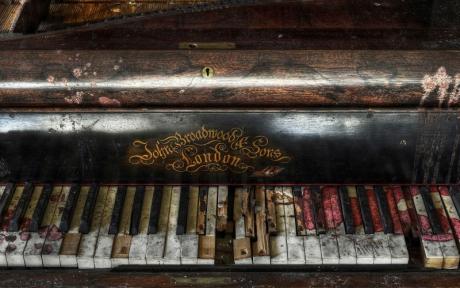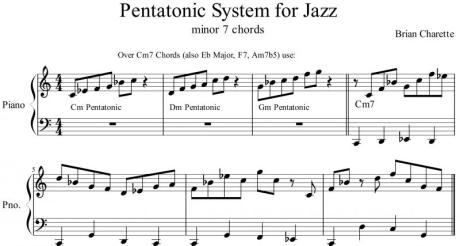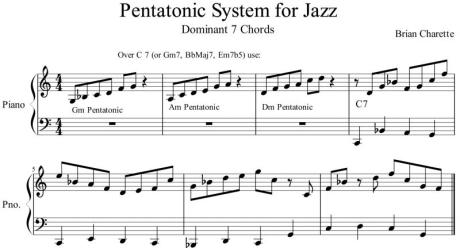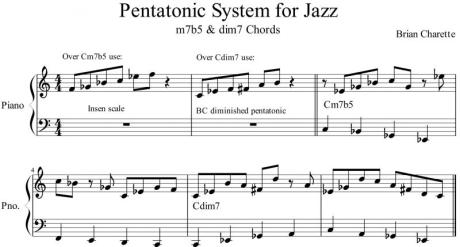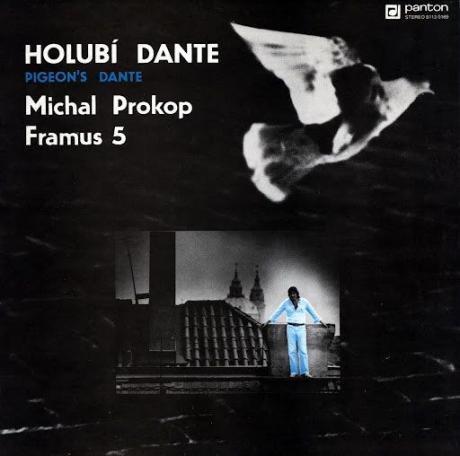Rock Organ V - workshop
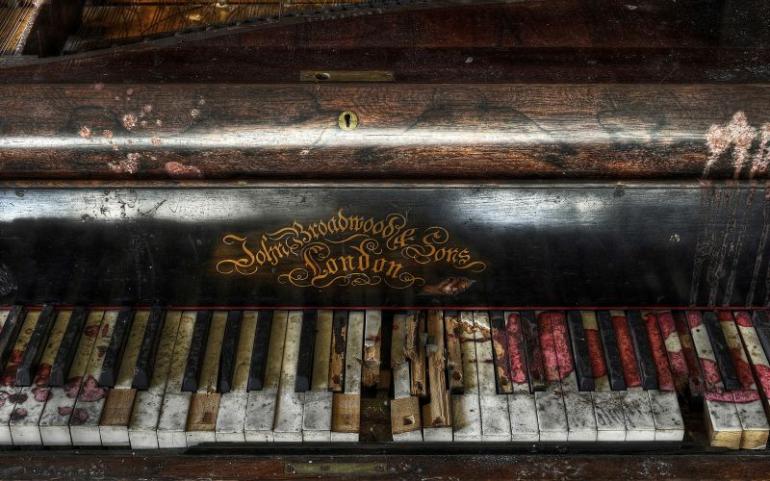
Čtenáři, možná vás zaskočí, že na českých stránkách nacházíte anglický text. Není to chyba. V současné době pro časopis Muzikus píše newyorkský klávesista a pianista Brian Charette. A tak jsem si v redakci řekli, že bychom mohli něco udělat pro zlepšení vašich znalostí angličtiny. Určitě nám dáte za pravdu, že angličtina se na pódiích objevuje stále častěji a potřeba domluvit se na pódiu i v zákulisí se stane brzy samozřejmosti. Proto zde naleznete originální verzi přímo od Briana a na stránkách časopisu Muzikus v čísle 11/2013 článek přeložený Petrem Štikou. Navíc zde máte audio ukázky, které do časopisu jaksi přeložit neumíme. Enjoy reading!
šéfredaktor časopisu Muzikus Ing. Vladimír Švanda
This month, I would like to speak about a system of playing overlapping pentatonic scales that will make you sound like you are playing very advanced harmonic lines with only a few pentatonic scales. In the following exercises, we will talk about only minor pentatonic scales with no "blue" note. Here is the formula: 1, b3, 4, 5, b7. It's very important once you understand the concepts of the article, to transpose these exercises to all 12 keys. This is where the "feel" of the system is really developed. I'll start with some ideas that work for improvising on m7 chords. I'll give all the exercises in C. On your own, practice through the cycle of 5ths, for example Gm7= G, A, D Pent; Dm7= D, E, A pent..etc....
1. minor 7 chords
The basic idea is to identify pentatonic scales starting on scale degrees of the C dorian mode that have interesting notes in relation to the chord, in this example Cm7. If we take the notes of a Cminor pentatonic scale, and mix them with notes from the Dminor and Gminor pentatonic scales by freely moving from one scale to another and back again, we automatically get very interesting and modern lines and we are only thinking about 3 pentatonic scales. In other words, Over a Cm7 Chord, minor pentatonic scales built on the 1st, 2nd, and 5th scale degrees of the C dorian mode (C, D, Eb, F, G, A, Bb, C)= Instant hip lines :) The key to making this technique sound interesting is to disguise the fact that you are using pentatonics by playing them on top of each other and switching from one to another quickly. In bar 4 of Ex 1, I start to walk a bass line in the C dorian mode while mixing the three pentatonic scales in my right hand. Notice how I switch very quickly from one to another and how interesting 4th and 2nd shapes occur very naturally. Because this theory is based on modes these pentatonics also work over F7, EbMaj7, and Am7b5 chords.
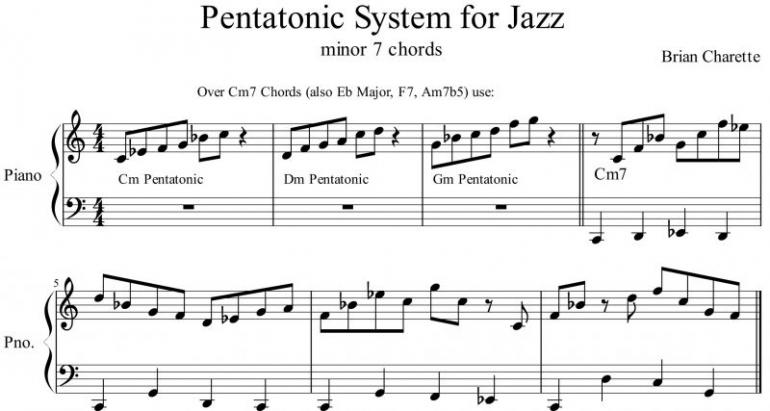
2. Major 7 Chords
For Maj7 chords, use pentatonics built of the 3rd, 6th, and 7th scale degrees of the C Ionian Mode (C, D, E, F, G, A, B, C). Notice how the B minor pentatonic creates a very interesting #11 sound with the F#. On bar 4 I walk a bass line again in the C Ionian mode while mixing the B, E, and A pentatonic scales in my right hand improvisation. These pentatonics also work over Am7, D7, and F#m7b5
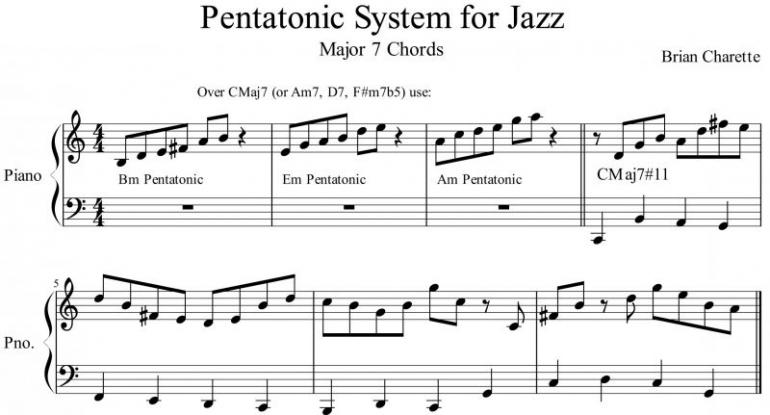
3. Dominant 7 Chords
Over a C7 chord we can play pentatonic scales starting on the 5th, 6th, and 2nd scale degree of a C mixolydian mode: C, D, E, F, G, A, Bb, C. Notice how these are exactly the scales we would play over a Gm7 chord. This is why this is such a great system. You can think of all your dominant chords (in this case C7) as the 2minor chord that would usually preceed it (Gm7) The pentatonics are the same. In Bar 4 I walk a bassline in the Mixolydian mode with the combined scales for improvisation.
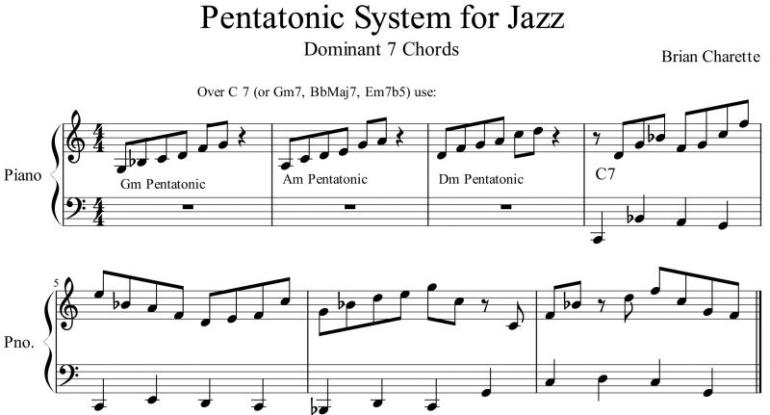
4. m7b5 and Dim7 Chords
These chords are a little unusual. For now I will give you one device that works very well for each. For Cm7b5 we will use a Japanese scale called the Insen Scale. This scale actually starts on the root of D. For us, an easy way to think of it is as a Cm7b5 arpeggio with the note "F", or a 4th above the root added. The scale sounds very exotic and works well with our pentatonic sound. For a Cdim7 chord, I combine the first 3 notes of the Cminor pentatonic scale and the 1st 3 notes of a F# minor pentatonic scale: C, Eb, F, F#, A, B. This pattern can also be repeated every minor 3rd because of the symmetrical nature of diminished chords. Try transposing this scale to Eb, Gb, and A to get the sound. I put a hint of this sound in the last 2 bars of Ex 4.
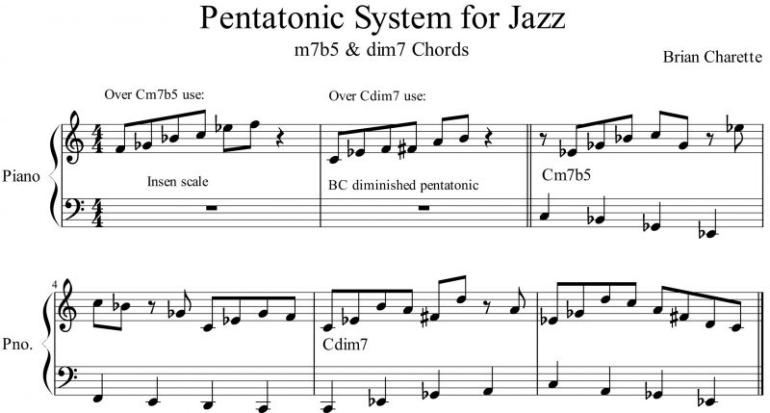
I'll leave you with an advanced application of our diminished concept; All of our diminished ideas can be played a 1/2 step above a chord root for Altered Dominant sounds. If you play our Cdim7 Scale over a B7#9 Chord, you get an interesting altered scale with the flat 9, 3rd, flat5, 5, and dominant 7.
